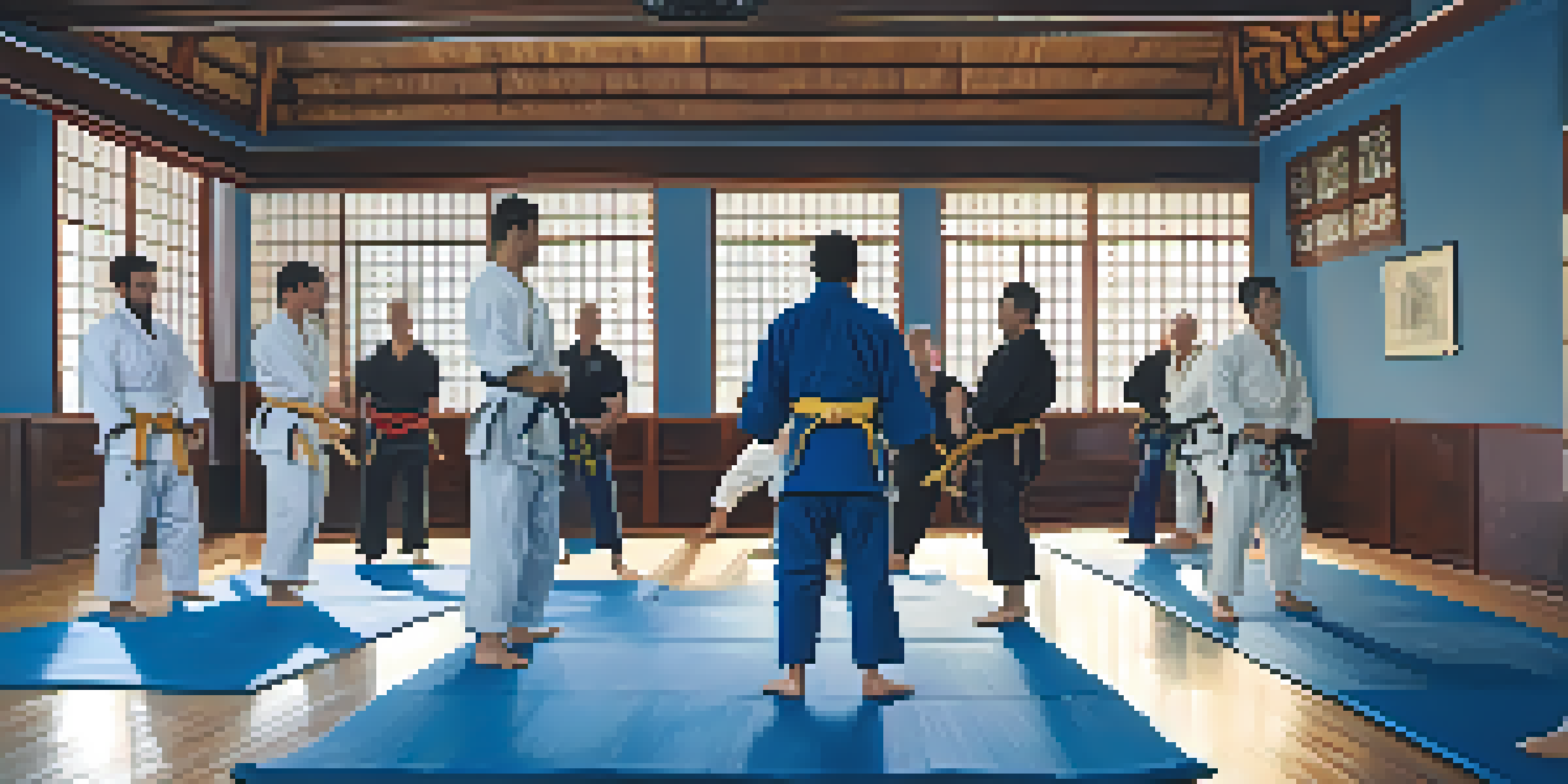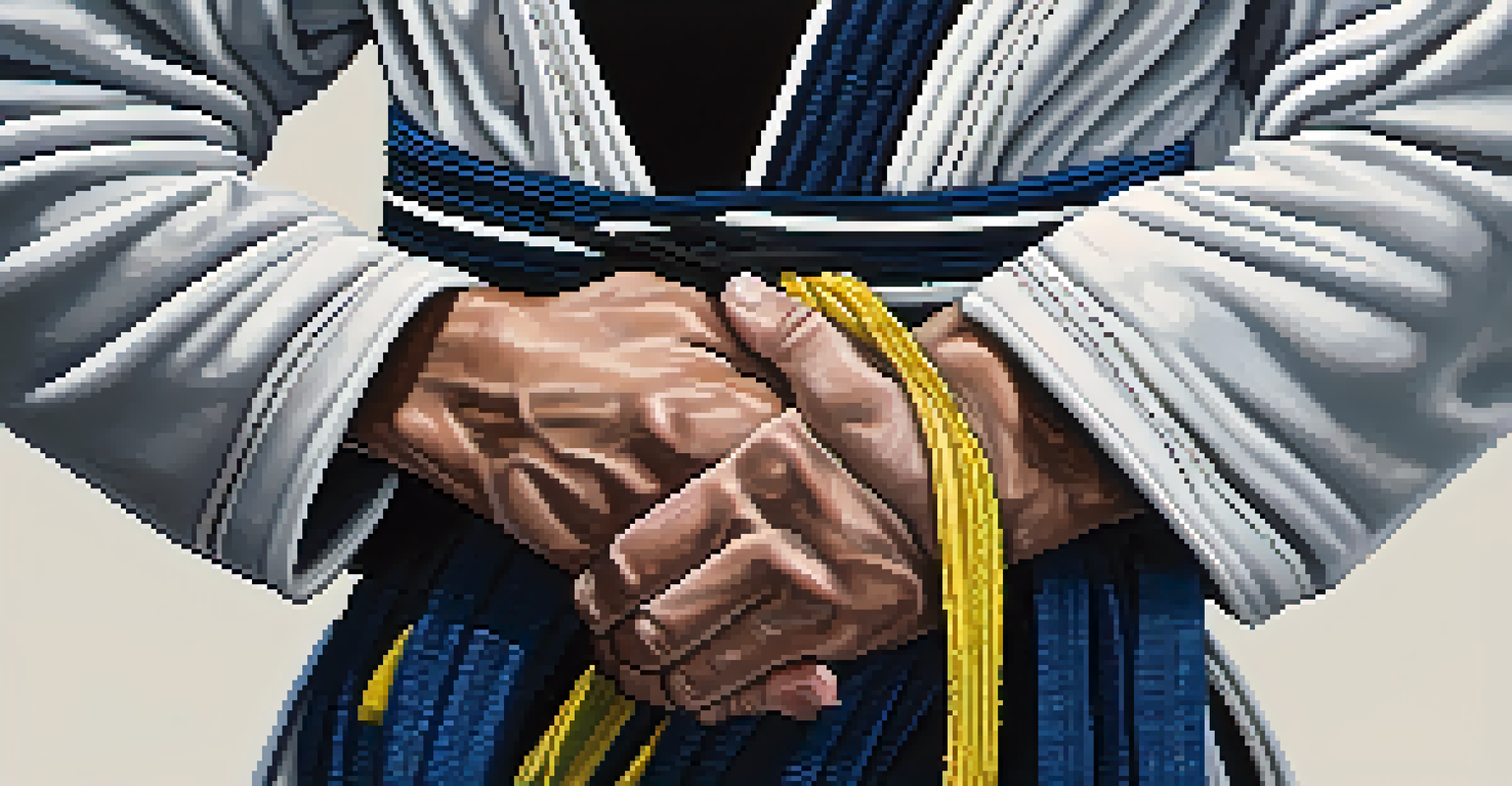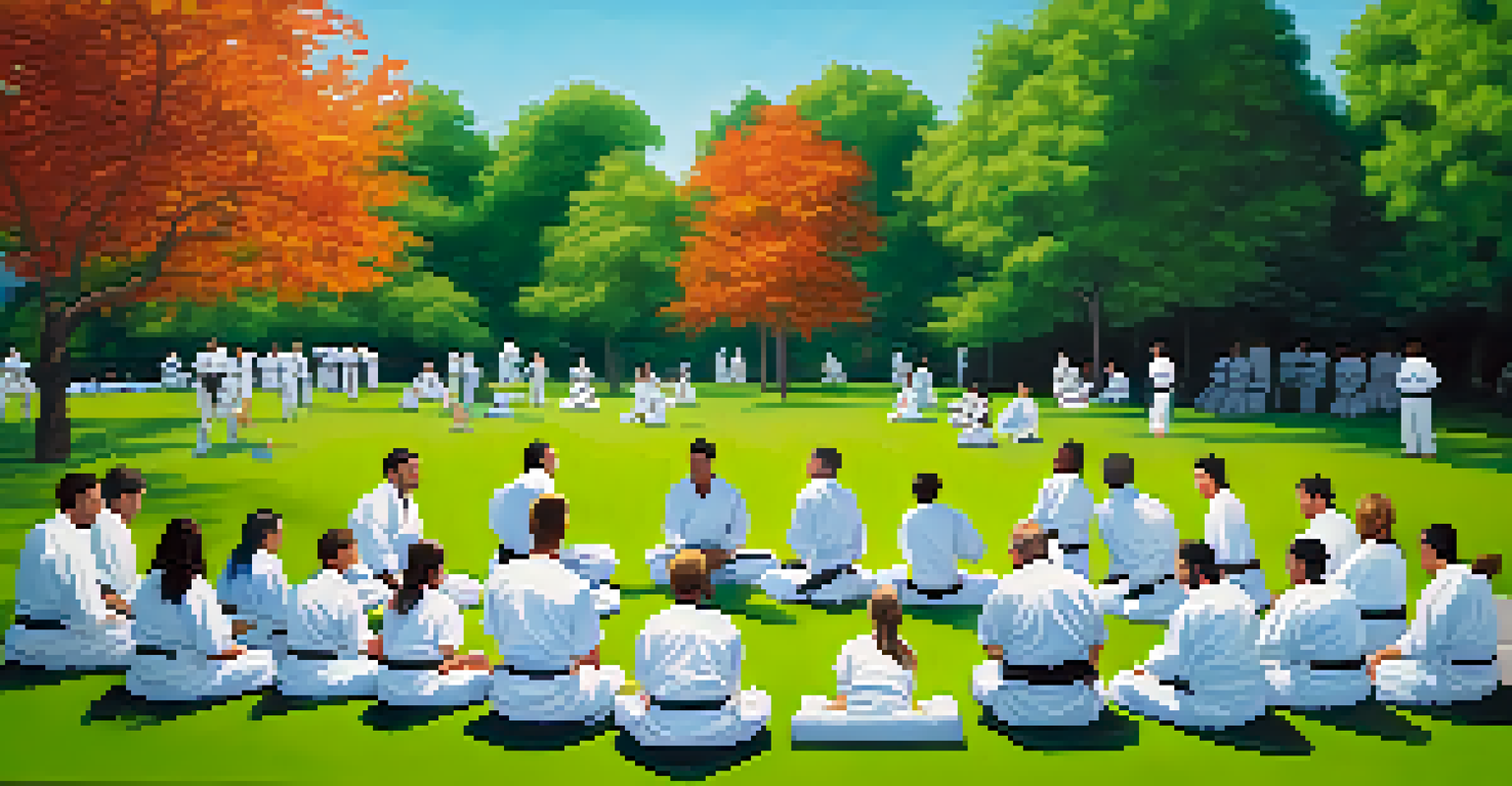The Legacy of Helio Gracie and Brazilian Jiu-Jitsu's Rise

Helio Gracie: The Pioneer of Brazilian Jiu-Jitsu
Helio Gracie is often regarded as the father of Brazilian Jiu-Jitsu (BJJ), having transformed traditional Japanese jiu-jitsu into a unique martial art that emphasizes leverage and technique over brute strength. Born in 1913, Helio's journey began when he was introduced to jiu-jitsu by his older brother, Carlos. Despite his frail physique, he adapted the techniques to suit his needs, proving that BJJ can be effective for anyone, regardless of size or strength.
The more you train, the less you will suffer.
His innovative approach included developing techniques that allowed smaller practitioners to defend against larger opponents. This focus on efficiency and technique became a hallmark of BJJ, making it accessible to a wider audience. Helio's passion for martial arts extended beyond training; he dedicated his life to teaching and promoting BJJ, ensuring its survival and growth.
Through his teachings and competitions, Helio laid the groundwork for what would become a global phenomenon. His legacy is not just about the techniques he created but also the philosophy of resilience and adaptability that he instilled in his students.
The Evolution of Brazilian Jiu-Jitsu
Brazilian Jiu-Jitsu has come a long way since its inception, evolving through various influences and practices. After Helio's foundational years, the art continued to grow, especially with the establishment of academies across Brazil. These schools became hotbeds of innovation, where practitioners explored new techniques and strategies, further enriching the art.

In the 1990s, BJJ gained international attention with the emergence of the Ultimate Fighting Championship (UFC). The Gracie family's participation showcased the effectiveness of BJJ in mixed martial arts (MMA) settings, leading to a surge in interest worldwide. This exposure introduced countless athletes and enthusiasts to the discipline, sparking a new era of training and competition.
Helio Gracie's Transformative Legacy
Helio Gracie revolutionized martial arts by adapting jiu-jitsu techniques to empower smaller practitioners, emphasizing leverage and technique.
As BJJ spread globally, it assimilated different martial arts, leading to the development of hybrid styles. Today, BJJ is not just a martial art but a lifestyle for many, promoting physical fitness, mental discipline, and community engagement.
The Gracie Family: Guardians of the Legacy
The Gracie family's commitment to BJJ has been instrumental in preserving Helio's legacy. Each member has played a vital role in teaching and promoting the art, ensuring that its core principles remain intact. From Helio's sons to his grandchildren, the family continues to innovate while honoring their roots.
Brazilian Jiu-Jitsu is not about being the best, it's about being better than you were yesterday.
In the spirit of education, the Gracie family established numerous academies and programs worldwide, spreading knowledge and accessibility. Their influence extends beyond just training; they have produced champions and instructors who have further popularized BJJ across various demographics.
The family's dedication to the art is reflected in their motto: 'The fight is not over until you win.' This philosophy empowers students to persevere and grow, ensuring that Helio's vision of resilience and adaptability lives on.
The Impact of Brazilian Jiu-Jitsu on Self-Defense
One of the most significant contributions of Brazilian Jiu-Jitsu is its effectiveness in self-defense scenarios. BJJ teaches individuals how to defend themselves against larger attackers, using leverage and technique rather than brute force. This practical application has attracted many who seek to learn martial arts for personal safety.
Many self-defense programs now incorporate BJJ principles, highlighting its relevance in real-world situations. Practitioners learn how to escape holds, control opponents, and use techniques that can quickly neutralize threats. This focus on self-defense has made BJJ appealing to a diverse audience, including women and children.
BJJ's Global Community Thrives
Brazilian Jiu-Jitsu has fostered a diverse and vibrant global community that connects practitioners through shared knowledge and passion.
Moreover, the confidence gained from training in BJJ can have profound effects beyond physical safety. Students often report increased self-esteem and improved mental fortitude, reinforcing the idea that martial arts can empower individuals in various aspects of life.
BJJ's Influence on Modern Martial Arts
The influence of Brazilian Jiu-Jitsu on modern martial arts is undeniable. Many martial artists have integrated BJJ techniques into their training, recognizing its effectiveness in grappling and ground fighting. This cross-pollination has led to the development of more comprehensive fighting styles, enhancing the overall skill sets of practitioners in various disciplines.
In recent years, the popularity of MMA has further propelled BJJ into the spotlight. Fighters from diverse backgrounds are now seeking out BJJ training to gain a competitive edge, as grappling skills have become essential in successful fight strategies. This has cemented BJJ's status as a cornerstone of MMA training.
Additionally, BJJ's principles of flow and adaptability have influenced how martial arts are taught and approached. The emphasis on sparring and live drills fosters a more dynamic learning environment, encouraging students to think critically and adapt in real-time.
The Global Community of Brazilian Jiu-Jitsu Practitioners
BJJ has fostered a vibrant global community that transcends cultural and geographical boundaries. From local academies to international competitions, practitioners of all backgrounds come together to share their knowledge and passion for the art. This sense of community is a defining characteristic of BJJ, creating lifelong friendships and networks.
Events like the World Jiu-Jitsu Championship and the ADCC Submission Wrestling World Championship attract competitors from around the world, showcasing the talent and diversity within the BJJ community. Such events also serve as a platform for practitioners to connect, learn from each other, and celebrate their shared love for the sport.
BJJ's Future is Inclusive and Innovative
The future of Brazilian Jiu-Jitsu looks promising with increased women's participation and the integration of technology in training methods.
Social media has further amplified this sense of community, allowing practitioners to share techniques, experiences, and motivation. Online forums and platforms have created spaces for discussion and learning, ensuring that the legacy of BJJ continues to thrive in the digital age.
The Future of Brazilian Jiu-Jitsu
As Brazilian Jiu-Jitsu continues to grow, its future appears bright. The art is evolving with the integration of technology, online training platforms, and innovative training methods. This evolution allows practitioners to learn and connect in ways that were previously unimaginable, broadening access to BJJ education.
The rise of women's participation in BJJ is another promising trend. More women are taking up the sport, breaking stereotypes and creating a more inclusive environment. This shift not only enriches the practice but also empowers women, fostering a new generation of strong, skilled practitioners.

Ultimately, the future of BJJ will likely be shaped by the values instilled by pioneers like Helio Gracie: adaptability, resilience, and community. As long as these principles remain at the forefront, Brazilian Jiu-Jitsu will continue to thrive and inspire generations to come.